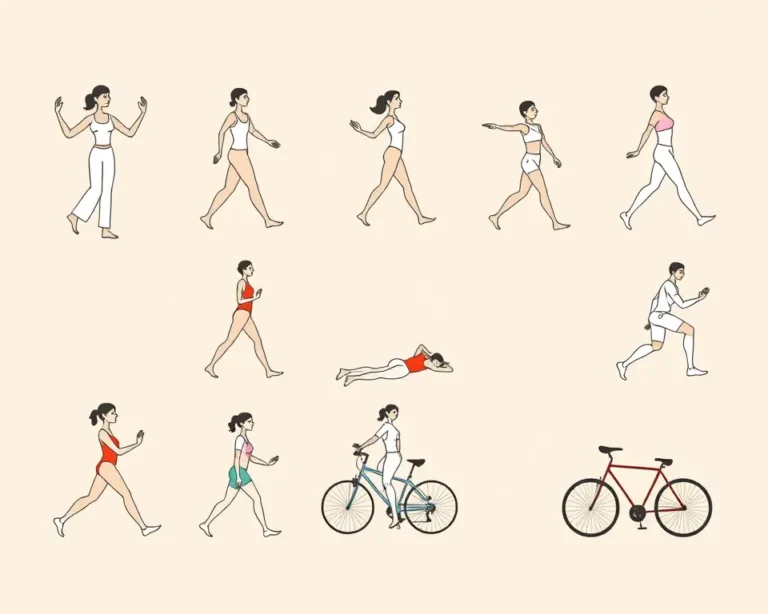Maintaining an active lifestyle is crucial for overall health, but high-impact exercises aren’t always suitable for everyone. Low-impact workouts offer an effective alternative, providing numerous benefits without putting excessive stress on your joints. These exercises enhance cardiovascular health, improve flexibility, and build strength, making them ideal for daily inclusion in your routine. Low-impact exercise is a form of physical activity that minimizes stress on the joints while still providing a challenging and engaging workout.
What are the Benefits of Low-Impact Exercise?
Low-impact exercises offer a myriad of benefits, making them an excellent choice for individuals of all ages and fitness levels.
- Joint-Friendly: Reduces stress on joints, making it suitable for people with joint pain, arthritis, or injuries.
- Cardiovascular Health: Improves heart health and lowers blood pressure.
- Muscle Strength: Helps maintain and build muscle mass.
- Flexibility: Enhances flexibility, reducing stiffness and muscle pulls.
- Mental Health: Boosts mood, reduces stress, and improves mental well-being.
- Weight Management: Aids in weight loss and maintenance.
- Accessibility: Can be easily incorporated into daily routines with minimal equipment.
- Injury Prevention: Decreases the risk of musculoskeletal injuries.
- Suitable for All Ages: Effective and safe for younger and older adults.
1. Walking: The Accessible Everyday Exercise
Walking is one of the most accessible and straightforward low-impact exercises to incorporate into your daily routine. It requires no special equipment and can be done virtually anywhere.
- Benefits: Enhances cardiovascular well-being, tones muscles, improves mood, and reduces the risk of heart disease, diabetes, and stroke.
- How to Include: Aim for a 30-minute brisk walk daily. Take the stairs instead of the elevator, walk during lunch breaks, or walk your dog. To increase intensity, try a hilly route or speed up your pace.
2. Cycling: Joint-Friendly Stamina Booster
Cycling, whether outdoors or on a stationary bike, is a fantastic low-impact exercise that strengthens your legs and boosts stamina.
- Benefits: Strengthens leg muscles, improves cardiovascular health, enhances balance, and is gentle on the knees, ankles, hips, and back.
- How to Include: Cycle to work, take leisurely bike rides in the park, or use a stationary bike at home or the gym. Indoor cycling classes can also provide a structured workout.
3. Swimming: The King of Low-Impact Cardio
Swimming is often dubbed the “king of low-impact cardio” due to its full-body workout nature and minimal stress on the joints.
- Benefits: Builds muscle strength, improves flexibility, enhances heart health, and is particularly beneficial for individuals with arthritis or osteoporosis. The buoyancy of water takes pressure off bones and joints.
- How to Include: Swim laps at a local pool, participate in water aerobics classes, or simply enjoy a leisurely swim in the sea. Different strokes can emphasize different muscle groups.
4. Yoga: Mind and Body Harmony
Yoga is a low-impact workout that improves mental and physical fitness through various poses and breathing exercises.
- Benefits: Develops strength, balance, and flexibility while reducing stress and improving mental well-being.
- How to Include: Join a yoga class suitable for your experience level or follow online tutorials. Start with simple poses and gradually work your way up to more challenging ones.
5. Pilates: Core Strength and Flexibility
Pilates is a low-impact workout that focuses on core strength, flexibility, and posture.
- Benefits: Improves core stability, enhances flexibility, corrects posture, and strengthens muscles with gentle, fluid movements.
- How to Include: Attend Pilates classes or practice at home using online resources. Focus on supine-lying abdominal work and side-lying leg exercises.
6. Elliptical Training: Full-Body, Low-Stress Workout
The elliptical machine offers a full-body workout with minimal impact on the joints.
- Benefits: Provides a cardiovascular workout, builds strength in the legs, and is less painful than running for individuals with arthritic joints.
- How to Include: Use the elliptical at the gym or invest in a home machine. Adjust the resistance and elevation to modify the intensity of your workout.
7. Tai Chi: Gentle Movements for Health
Tai Chi is a low-impact exercise involving slow, gentle movements and focused breathing.
- Benefits: Improves balance, coordination, and flexibility. It also reduces stress and enhances mental well-being.
- How to Include: Join a Tai Chi class or follow instructional videos. Focus on maintaining proper form and breathing techniques.
8. Stair Climbing: Elevate Your Fitness
Stair climbing is a simple yet effective low-impact exercise that can be easily included in your daily routine.
- Benefits: Enhances cardiovascular health, strengthens leg muscles, and improves overall endurance.
- How to Include: Take the stairs instead of the elevator whenever possible. You can also use a stair climbing machine at the gym for a more structured workout.
9. Water Aerobics: Aquatic Fitness Fun
Water aerobics combines the benefits of water exercise with structured aerobic movements.
- Benefits: Improves flexibility, coordination, and muscle tone while reducing joint stress. The water provides resistance and buoyancy, making it an excellent option for low-impact fitness.
- How to Include: Join a water aerobics class at a local pool. These classes often incorporate arm, leg, and spine movements for a full-body workout.
Adapting Traditional Exercises for Low Impact
Traditional exercises like weights and cardio circuits can be modified to create low-impact workouts. For example, instead of jumping jacks, perform low-impact jumping jacks by stepping out to the side instead of jumping. Modify burpees by eliminating the jump and stepping your feet back instead of kicking them out.
- Low-Impact Jumping Jack: Step your right foot out, and at the same time bring your arms up above your head. Return to your starting position and repeat on the opposite side.
- Modified Burpees: Start in a deep squat, kick your legs straight out behind you (no jump), do a push-up, and return to the starting position.
- Chair Squats: Stand in front of a sturdy chair, lower yourself toward the chair as if you were about to sit down, hover just above the chair, and stand back up.
By adapting traditional exercises, you can maintain a varied and engaging workout routine while minimizing stress on your joints.
Strength Training with Low Impact
Strength training is essential for building muscle mass and improving overall fitness. Dumbbells, resistance bands, and weight machines are good low-impact options.
- Benefits: Increases muscle mass, strengthens bones, and improves flexibility without over-straining your joints.
- How to Include: Start slowly and gradually increase the resistance or weight as the exercises feel easier. Focus on proper form and breathing techniques.
Low impact interval training can also build muscle and ensure you learn to do the exercises correctly. A low impact interval circuit could include no-jump jacks, jump-free squats and modified lunges.
Making Low-Impact Exercise a Daily Practice
Consistency is key to reaping the benefits of low-impact exercise. Find activities you enjoy and incorporate them into your daily routine. Whether it’s a brisk walk, a swim, or a yoga session, making exercise a regular part of your day will contribute to long-term health and well-being.
- Schedule: Set specific times for exercise each day.
- Variety: Mix up your activities to stay engaged and prevent boredom.
- Goals: Set achievable fitness goals and track your progress.
- Listen to Your Body: Pay attention to any pain or discomfort and adjust your routine accordingly.
- Consult a Professional: If you have any underlying health conditions or concerns, consult with your doctor or a certified fitness professional before starting a new exercise program.
By following these tips, you can make low-impact exercise a sustainable and enjoyable part of your daily life.







